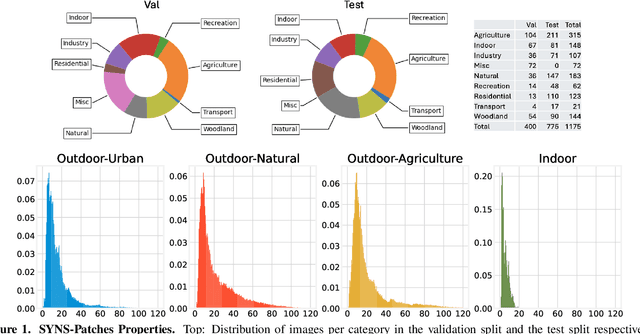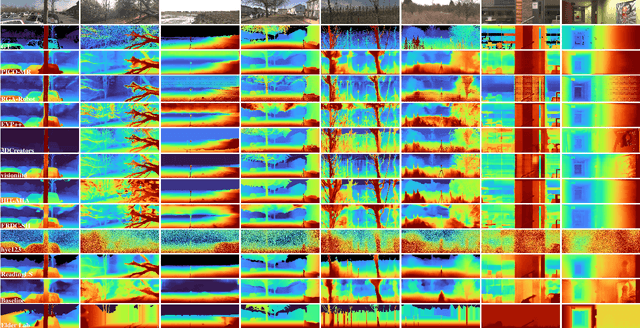Chris Russell
Evaluating Model Explanations without Ground Truth
May 15, 2025Abstract:There can be many competing and contradictory explanations for a single model prediction, making it difficult to select which one to use. Current explanation evaluation frameworks measure quality by comparing against ideal "ground-truth" explanations, or by verifying model sensitivity to important inputs. We outline the limitations of these approaches, and propose three desirable principles to ground the future development of explanation evaluation strategies for local feature importance explanations. We propose a ground-truth Agnostic eXplanation Evaluation framework (AXE) for evaluating and comparing model explanations that satisfies these principles. Unlike prior approaches, AXE does not require access to ideal ground-truth explanations for comparison, or rely on model sensitivity - providing an independent measure of explanation quality. We verify AXE by comparing with baselines, and show how it can be used to detect explanation fairwashing. Our code is available at https://github.com/KaiRawal/Evaluating-Model-Explanations-without-Ground-Truth.
Deepfakes on Demand: the rise of accessible non-consensual deepfake image generators
May 06, 2025Abstract:Advances in multimodal machine learning have made text-to-image (T2I) models increasingly accessible and popular. However, T2I models introduce risks such as the generation of non-consensual depictions of identifiable individuals, otherwise known as deepfakes. This paper presents an empirical study exploring the accessibility of deepfake model variants online. Through a metadata analysis of thousands of publicly downloadable model variants on two popular repositories, Hugging Face and Civitai, we demonstrate a huge rise in easily accessible deepfake models. Almost 35,000 examples of publicly downloadable deepfake model variants are identified, primarily hosted on Civitai. These deepfake models have been downloaded almost 15 million times since November 2022, with the models targeting a range of individuals from global celebrities to Instagram users with under 10,000 followers. Both Stable Diffusion and Flux models are used for the creation of deepfake models, with 96% of these targeting women and many signalling intent to generate non-consensual intimate imagery (NCII). Deepfake model variants are often created via the parameter-efficient fine-tuning technique known as low rank adaptation (LoRA), requiring as few as 20 images, 24GB VRAM, and 15 minutes of time, making this process widely accessible via consumer-grade computers. Despite these models violating the Terms of Service of hosting platforms, and regulation seeking to prevent dissemination, these results emphasise the pressing need for greater action to be taken against the creation of deepfakes and NCII.
* 13 pages
The Fourth Monocular Depth Estimation Challenge
Apr 24, 2025Abstract:This paper presents the results of the fourth edition of the Monocular Depth Estimation Challenge (MDEC), which focuses on zero-shot generalization to the SYNS-Patches benchmark, a dataset featuring challenging environments in both natural and indoor settings. In this edition, we revised the evaluation protocol to use least-squares alignment with two degrees of freedom to support disparity and affine-invariant predictions. We also revised the baselines and included popular off-the-shelf methods: Depth Anything v2 and Marigold. The challenge received a total of 24 submissions that outperformed the baselines on the test set; 10 of these included a report describing their approach, with most leading methods relying on affine-invariant predictions. The challenge winners improved the 3D F-Score over the previous edition's best result, raising it from 22.58% to 23.05%.
The effect of fine-tuning on language model toxicity
Oct 21, 2024



Abstract:Fine-tuning language models has become increasingly popular following the proliferation of open models and improvements in cost-effective parameter efficient fine-tuning. However, fine-tuning can influence model properties such as safety. We assess how fine-tuning can impact different open models' propensity to output toxic content. We assess the impacts of fine-tuning Gemma, Llama, and Phi models on toxicity through three experiments. We compare how toxicity is reduced by model developers during instruction-tuning. We show that small amounts of parameter-efficient fine-tuning on developer-tuned models via low-rank adaptation on a non-adversarial dataset can significantly alter these results across models. Finally, we highlight the impact of this in the wild, demonstrating how toxicity rates of models fine-tuned by community contributors can deviate in hard-to-predict ways.
DELTA: Dual Consistency Delving with Topological Uncertainty for Active Graph Domain Adaptation
Sep 13, 2024



Abstract:Graph domain adaptation has recently enabled knowledge transfer across different graphs. However, without the semantic information on target graphs, the performance on target graphs is still far from satisfactory. To address the issue, we study the problem of active graph domain adaptation, which selects a small quantitative of informative nodes on the target graph for extra annotation. This problem is highly challenging due to the complicated topological relationships and the distribution discrepancy across graphs. In this paper, we propose a novel approach named Dual Consistency Delving with Topological Uncertainty (DELTA) for active graph domain adaptation. Our DELTA consists of an edge-oriented graph subnetwork and a path-oriented graph subnetwork, which can explore topological semantics from complementary perspectives. In particular, our edge-oriented graph subnetwork utilizes the message passing mechanism to learn neighborhood information, while our path-oriented graph subnetwork explores high-order relationships from substructures. To jointly learn from two subnetworks, we roughly select informative candidate nodes with the consideration of consistency across two subnetworks. Then, we aggregate local semantics from its K-hop subgraph based on node degrees for topological uncertainty estimation. To overcome potential distribution shifts, we compare target nodes and their corresponding source nodes for discrepancy scores as an additional component for fine selection. Extensive experiments on benchmark datasets demonstrate that DELTA outperforms various state-of-the-art approaches.
Resource-constrained Fairness
Jun 03, 2024Abstract:Access to resources strongly constrains the decisions we make. While we might wish to offer every student a scholarship, or schedule every patient for follow-up meetings with a specialist, limited resources mean that this is not possible. Existing tools for fair machine learning ignore these key constraints, with the majority of methods disregarding any finite resource limitations under which decisions are made. Our research introduces the concept of ``resource-constrained fairness" and quantifies the cost of fairness within this framework. We demonstrate that the level of available resources significantly influences this cost, a factor that has been overlooked in previous evaluations.
The Third Monocular Depth Estimation Challenge
Apr 27, 2024



Abstract:This paper discusses the results of the third edition of the Monocular Depth Estimation Challenge (MDEC). The challenge focuses on zero-shot generalization to the challenging SYNS-Patches dataset, featuring complex scenes in natural and indoor settings. As with the previous edition, methods can use any form of supervision, i.e. supervised or self-supervised. The challenge received a total of 19 submissions outperforming the baseline on the test set: 10 among them submitted a report describing their approach, highlighting a diffused use of foundational models such as Depth Anything at the core of their method. The challenge winners drastically improved 3D F-Score performance, from 17.51% to 23.72%.
Kick Back & Relax++: Scaling Beyond Ground-Truth Depth with SlowTV & CribsTV
Mar 03, 2024Abstract:Self-supervised learning is the key to unlocking generic computer vision systems. By eliminating the reliance on ground-truth annotations, it allows scaling to much larger data quantities. Unfortunately, self-supervised monocular depth estimation (SS-MDE) has been limited by the absence of diverse training data. Existing datasets have focused exclusively on urban driving in densely populated cities, resulting in models that fail to generalize beyond this domain. To address these limitations, this paper proposes two novel datasets: SlowTV and CribsTV. These are large-scale datasets curated from publicly available YouTube videos, containing a total of 2M training frames. They offer an incredibly diverse set of environments, ranging from snowy forests to coastal roads, luxury mansions and even underwater coral reefs. We leverage these datasets to tackle the challenging task of zero-shot generalization, outperforming every existing SS-MDE approach and even some state-of-the-art supervised methods. The generalization capabilities of our models are further enhanced by a range of components and contributions: 1) learning the camera intrinsics, 2) a stronger augmentation regime targeting aspect ratio changes, 3) support frame randomization, 4) flexible motion estimation, 5) a modern transformer-based architecture. We demonstrate the effectiveness of each component in extensive ablation experiments. To facilitate the development of future research, we make the datasets, code and pretrained models available to the public at https://github.com/jspenmar/slowtv_monodepth.
Evaluating the Fairness of Discriminative Foundation Models in Computer Vision
Oct 18, 2023Abstract:We propose a novel taxonomy for bias evaluation of discriminative foundation models, such as Contrastive Language-Pretraining (CLIP), that are used for labeling tasks. We then systematically evaluate existing methods for mitigating bias in these models with respect to our taxonomy. Specifically, we evaluate OpenAI's CLIP and OpenCLIP models for key applications, such as zero-shot classification, image retrieval and image captioning. We categorize desired behaviors based around three axes: (i) if the task concerns humans; (ii) how subjective the task is (i.e., how likely it is that people from a diverse range of backgrounds would agree on a labeling); and (iii) the intended purpose of the task and if fairness is better served by impartiality (i.e., making decisions independent of the protected attributes) or representation (i.e., making decisions to maximize diversity). Finally, we provide quantitative fairness evaluations for both binary-valued and multi-valued protected attributes over ten diverse datasets. We find that fair PCA, a post-processing method for fair representations, works very well for debiasing in most of the aforementioned tasks while incurring only minor loss of performance. However, different debiasing approaches vary in their effectiveness depending on the task. Hence, one should choose the debiasing approach depending on the specific use case.
Kick Back & Relax: Learning to Reconstruct the World by Watching SlowTV
Jul 20, 2023



Abstract:Self-supervised monocular depth estimation (SS-MDE) has the potential to scale to vast quantities of data. Unfortunately, existing approaches limit themselves to the automotive domain, resulting in models incapable of generalizing to complex environments such as natural or indoor settings. To address this, we propose a large-scale SlowTV dataset curated from YouTube, containing an order of magnitude more data than existing automotive datasets. SlowTV contains 1.7M images from a rich diversity of environments, such as worldwide seasonal hiking, scenic driving and scuba diving. Using this dataset, we train an SS-MDE model that provides zero-shot generalization to a large collection of indoor/outdoor datasets. The resulting model outperforms all existing SSL approaches and closes the gap on supervised SoTA, despite using a more efficient architecture. We additionally introduce a collection of best-practices to further maximize performance and zero-shot generalization. This includes 1) aspect ratio augmentation, 2) camera intrinsic estimation, 3) support frame randomization and 4) flexible motion estimation. Code is available at https://github.com/jspenmar/slowtv_monodepth.
 Add to Chrome
Add to Chrome Add to Firefox
Add to Firefox Add to Edge
Add to Edge